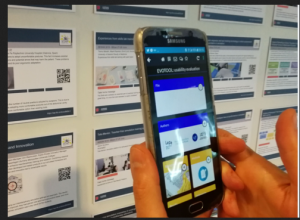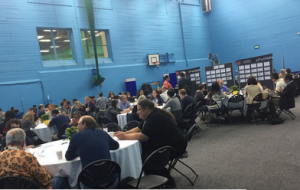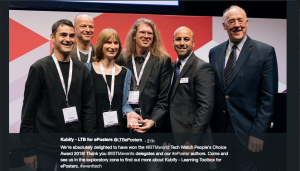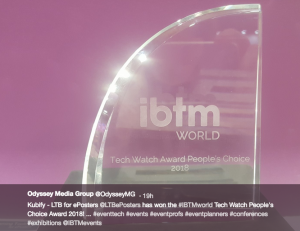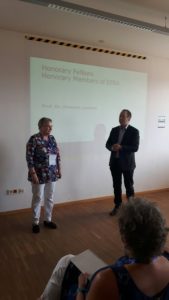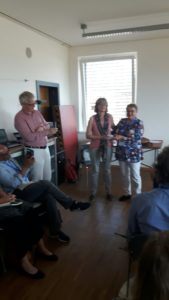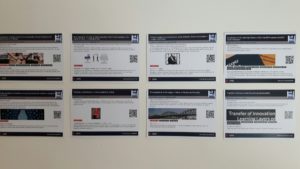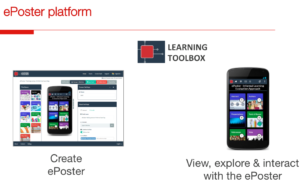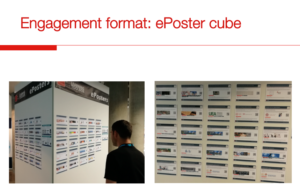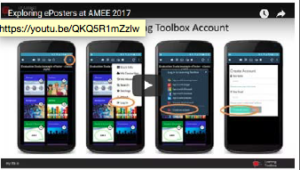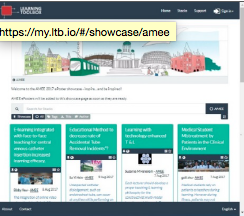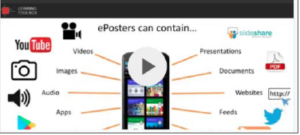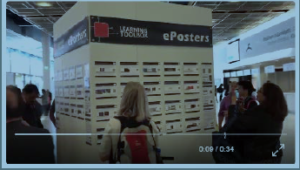Celebrating ePosters powered by Learning Toolbox – The Kubify team nominated for a major award
The readers of this blog may remember that the Learning Toolbox (LTB) was a major outcome of the EU-funded Learning Layers project and its Construction pilot. During the project idea of the Learning Toolbox emerged as a toolset to support workplace learning projects. It provided support for instruction, planning, access to resources, communication and documentation. By the end of project our colleagues in the Learning Layers Healthcare project had discovered the potential of Learning Toolbox as support for the poster sessions of healthcare conferences.
This led to an amazing spin-off innovation – the ePosters that are accessible via QR-codes that lead to the LTB mobile apps. Thus, the conference participants can inform themselves of the poster contents before scheduled poster sessions, during the conference and after the conference. As a support for accessing ePosters the LTB-developers shaped small mini-posters with the title, an image, brief text and the QR-tag. These mini-posters were then presented on a poster-cubicle that was placed at a central place near the registration desks and equipped with tables that enabled different kinds of round table talks (Barcamp, ePoster Arna etc.). With all these elements the time was ripe for the success story of the Kubify team.
From start-ups to innovation leaders and award winners
As I mentioned, the Learning Toolbox (LTB) was developed as a digital toolset to support learning and knowledge sharing in the context of work organisations and workplaces. That provided a basis for an innovation path of the start-up company stack.services. The use of LTB as support for conferences and events was another path – for which the start-up company Kubify was created.
In the beginning the Kubify team was present at conferences that focused on healthcare sector and on educational technology. But in a short while they have expanded the range of their activities and reached new users in different contexts. And what is more encouraging – they have become highly appreciated. Last year (2018) the Kubify team won the #IBTMWorld Tech Watch Award 2018 at the international event of conference organisers.
This all came back to my mind now that we got the message that the Kubify team has been nominated for yet another award. As we have been told, Kubify – Learning Toolbox for ePosters is part of the EventTech Live LaunchPad competition this month. The web page of the LaunchPad page presents all competitors’ 1 minute pitch videos (page 1) and then provides an opportunity for giving your vote for your favourite. Please have a look what all is available:
We have been working with the developers of the Learning Toolbox (LTB) both in the context of workplace learning and in conferences that have used ePosters for interactive poster sessions. Therefore, we encourage everyone to have a look at the LaunchPad website and support the Kubify team’s case for a richly deserved recognition. Good luck!
More blogs to come …
